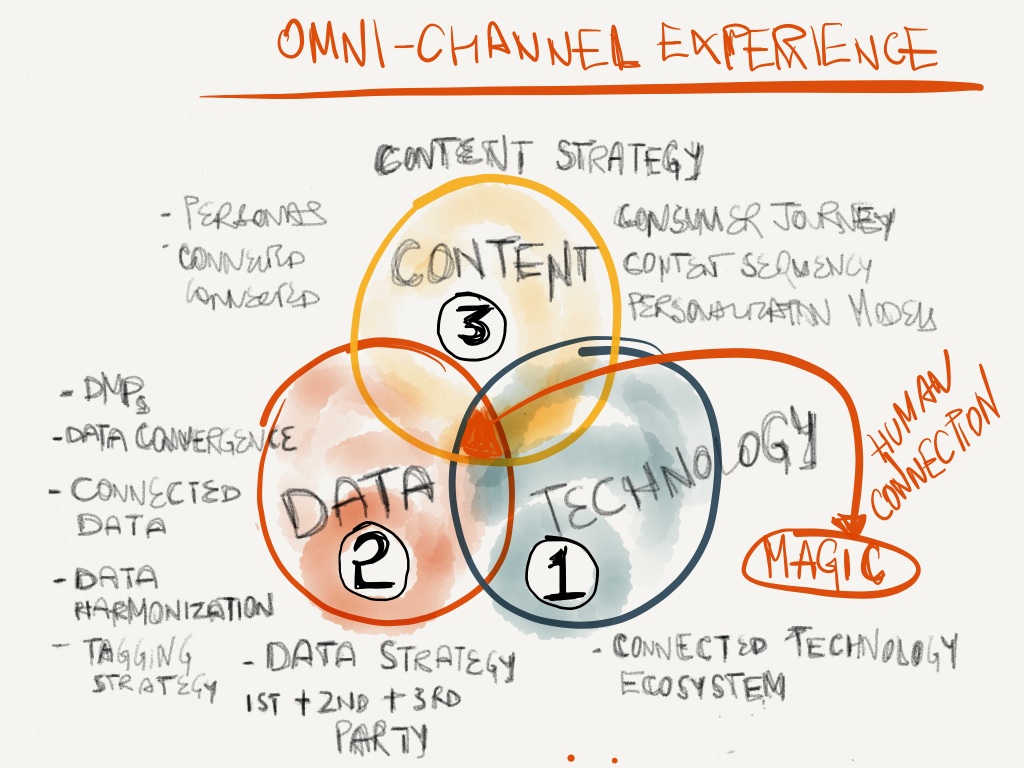Data has now become synonymous with “Big Data” which is good and bad. Good because it has brought a huge focus and investment into a reasonably big problem and an even bigger opportunity for the betterment of human life. It is bad because it has overshadowed the need to solve for “small data”, akin to a Bollywood or even a Hollywood movie where the “Big” brother overshadows the younger one up until the younger one retaliates with a rather non-ideal path to recognition.
However bad that analogy may be, the over obsession with “big data” as an industry is somewhat ironic because in many ways the solution for big data lies in solving the smaller pieces. Big Data is a glorified notion of a rather simplified challenge for at least 95% of the organizations and brands unless you re flying planes and managing air traffic or you re NASA or NIA that does have the challenge of really BIG data to solve BIG security problem.
There is no doubt that data and analytics has fundamentally transformed marketing and what marketers do today:
- It has allowed marketing to be measurable and tangible
- It has allowed marketing to drive ROI and Top Line Growth
- It has enabled marketing from being just about great creative and ads to business growth
- It has allowed brands to become more relevant to the consumer, at least relatively
But there is still one aspect where “DATA” can and should play a pivotal role ie in addressing “MARKETING FRAGMENTATION”, driving “DATA CONVERGENCE” through “DATA HARMONIZATION” and making the vision of “OMNI CHANNEL EXPERIENCES” a reality.
THE HOW?
- Data Convergence & Harmonization Strategy – SMALL DATA can solve Marketing’s BIG PROBLEM of fragmentation as long as brands are able to CONNECT and HARMONIZE the data silos. Make the notion of a universal consumer a reality with establishing a universal ID that goes across:
- 1st Party, 2nd Party and 3rd Party
- Data collected across channels & touch points
- Known and Anonymous Consumer Data
- Offline & Online data
- Data collected across consumer’s search, social & shopping behaviors
Define a strategy for how that ultimate universal view of your consumer should look like and how it will influence and drive the ultimate connected consumer experience
- Data Management Platforms (DMPs) – While this topic in itself requires a deep dive focus, at a high level the “data harmonization” and “data convergence” across the traditional silos has now become a reality thanks to the proliferation of Data Management Platforms commonly called a “DMP”. The concept of a DMP is fairly ancient, it’s a glorified and marketing/consumer focused data warehouse that besides bringing the ability to on-board and connect disparate data putting the consumer as the focal point, most advanced DMPs also bring “Decisioning Engines” that influence what the right experience should be for the consumer based where she is, who she is and what “she” wants to experience versus what the brands may want her to experience. All this is controlled and algorithmically determined through an underlying “rules engine”.
Caution – As you plan for establishing your DMP, you need to be cautious about not letting this layer get tightly coupled with a particular channel and instead should be a loosely coupled or channel agnostic layer. Most programmatic solutions or DSPs typically come with a DMP capability with all relevant features, but it is critical for this DMP to enable a relevant, personalized and seamless experience across “all channels” and not be limited to just “paid media”.
Look out for a subsequent write up from me on the expanding world of “Data Management Platforms”, for all it’s goodness and greatness, there is a lot of confusion as well because this wave of DMPs has inspired pretty much every system in the ecosystem to call themselves a “DMP”, nothing new in our world
- Channel Agnostic (Omni-Channel) Experience Planning – While the underlying connected data and a connected technology ecosystem will provide the underpinnings of an omni channel experience, you still need to have a channel agnostic planning and strategy. For instance:
Consumer Journeys – In the absence of a defined funnel, this could be difficult but you need to define journeys that depict possible behavior across the touch points and channels “assuming” that the journey does NOT break from one point to the other. What is the role and contribution of each touch point, tying it back to consumer behaviors you re trying to change.
Channel Agnostic Content Approach – If there is anything besides “data” and “technology” that is truly “channel agnostic” and a foundational tool to drive omni-channel experiences, it is “CONTENT”. Ensure you have a clearly defined content strategy, content sequencing and personalization models that will address some of the traditional inflection points as she moves from one touch point to the other, ensuring that “content” is influenced and made “smarter” with the insight and information about the “universal consumer”.
It is exciting to see the possibilities of delivering immersive, seamless and omni channel experiences now with the proliferation of recent “data management platforms and capabilities”. We are only starting to uncover the true strength especially of data with a number of data platforms coming in at the intersection point from different directions, the media DMPs like DataXu, Krux, Rocketfuel while someone like Nielson is starting to converge the online and offline boundaries. The next 12-18 months will be interesting and the brands that start on this journey now are bound to benefit with a clear head start in having a true shot at delivering Omni Channel & Seamless Consumer Experiences.



